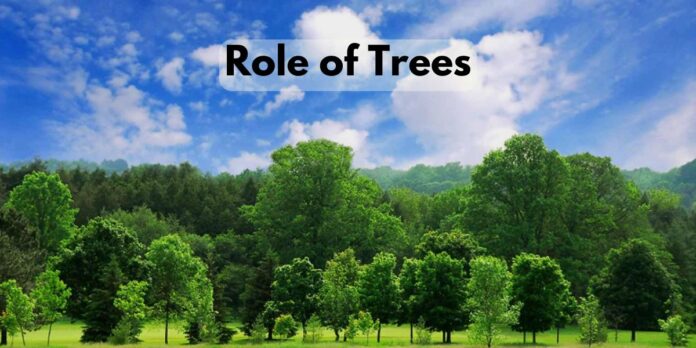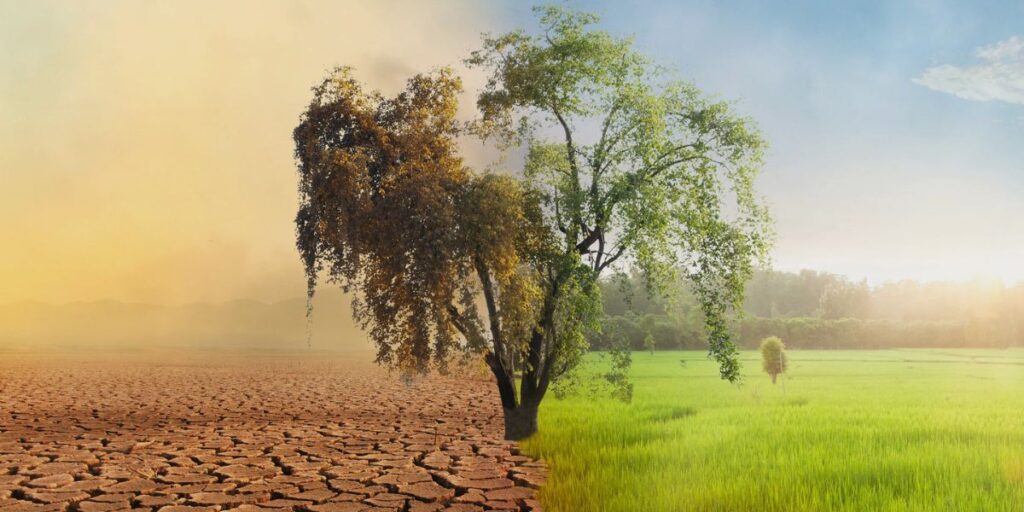Trees are among the most important components of the Earth’s ecosystems, playing a crucial role in maintaining environmental stability and supporting diverse forms of life. These towering giants not only beautify landscapes but also serve as the foundation of ecological balance. From sustaining biodiversity and regulating the climate to preserving soil health and supporting human well-being, the role of trees is indispensable in ensuring the planet’s overall health. Their contributions extend far beyond providing oxygen and shade, touching every part of the ecosystems they inhabit.
Trees as Oxygen Producers and Carbon Sinks
One of the most well-known roles of trees is their ability to produce oxygen through the process of photosynthesis. Trees absorb carbon dioxide (CO₂) from the atmosphere and release oxygen (O₂), which is essential for the survival of most life forms on Earth. A single mature tree can produce enough oxygen to support two humans annually, highlighting their pivotal role in sustaining life.
In addition to oxygen production, trees act as carbon sinks. By absorbing CO₂, they help reduce the concentration of greenhouse gases in the atmosphere, mitigating climate change. Forests, especially tropical rainforests, absorb vast amounts of carbon, acting as the planet’s natural climate regulators. The loss of forests not only diminishes this capacity but also releases stored carbon back into the atmosphere, exacerbating global warming.
Trees as Biodiversity Hubs
Trees provide habitats for a wide variety of organisms, from birds and insects to mammals and fungi. Forest ecosystems are among the most biodiverse environments on Earth, supporting countless species that rely on trees for shelter, food, and breeding sites. A single tree can house hundreds of different species, from bark-dwelling insects to birds that nest in its branches. In turn, these organisms contribute to the health of the trees by pollinating them, spreading their seeds, or controlling pests.
For many species, forests provide their entire habitat, forming complex food webs that rely on the health and longevity of trees. The disappearance of trees due to deforestation or urbanization can lead to the extinction of species that depend on them, creating ripple effects across the ecosystem.
Trees and Soil Health
Trees play an integral role in maintaining soil health. Their roots bind soil together, reducing erosion and preventing landslides. Without trees, soils are more prone to being washed or blown away by water and wind. Trees also help regulate the water cycle by absorbing and releasing water into the atmosphere, maintaining soil moisture levels and reducing the risk of drought.
Leaf litter, fallen branches, es, and decaying organic matter from trees enrich the soil with essential nutrients. This decomposition process is vital for replenishing the soil, ensuring it remains fertile for other plant species. Forest soils are rich in microorganisms, fungi, and insects that contribute to nutrient cycling and soil structure, all of which are supported by the presence of trees.
Trees and Water Regulation
Trees are key players in the water cycle. Through a process known as transpiration, trees absorb water from the soil and release it as water vapor through their leaves, helping to regulate local and global water cycles. Forests act as natural sponges, capturing rainfall and slowly releasing it into rivers and streams. This regulation of water flow prevents floods during heavy rainfall and maintains water supplies during dry seasons.
Moreover, tree canopies intercept rainwater, reducing the impact of heavy rains on the soil, which helps to prevent erosion and promote groundwater recharge. Forests near water bodies also act as filters, trapping pollutants and sediments that would otherwise degrade water quality. This purification process is essential for maintaining clean water sources for humans and wildlife alike.
Trees and Climate Moderation
Trees help moderate local climates by providing shade and reducing temperatures through the process of evapotranspiration, where water is evaporated from leaves into the air. This natural cooling effect is particularly important in urban areas. Where the “heat island” effect caused by concrete and asphalt can make cities significantly hotter than surrounding areas. Urban trees help reduce this effect by providing shade and releasing moisture into the air. Making cities more livable and reducing energy consumption from air conditioning.
Furthermore, trees play a significant role in controlling wind patterns and acting as natural windbreaks. In agricultural regions, trees are often planted along field edges to reduce wind erosion, protect crops, and create microclimates that enhance productivity.
Human and Cultural Benefits of Trees
Beyond their ecological functions, trees provide numerous benefits to human societies. They offer food, fuel, timber, and medicines, supporting economies and livelihoods worldwide. Indigenous communities and cultures around the globe have spiritual and cultural connections to trees, viewing them as symbols of life, wisdom, and continuity.
In urban settings, trees improve mental and physical health by offering green spaces for recreation and relaxation. Studies have shown that spending time in natural environments. Especially in forests or tree-rich areas, can reduce stress, lower blood pressure, and improve mood. Trees also increase property values, enhance neighborhood aesthetics, and foster community well-being.
Conclusion
The role of trees in ecosystems is multifaceted and indispensable. From regulating the climate and supporting biodiversity to preserving soil health and improving human well-being, trees are foundational pillars of ecological balance. Their preservation is not only vital for environmental sustainability but also for the future of all life on Earth. As deforestation and environmental degradation continue to threaten ecosystems worldwide, the importance of protecting and planting trees has never been more critical. By understanding and appreciating the role of trees, we can work towards a more sustainable and balanced future.





